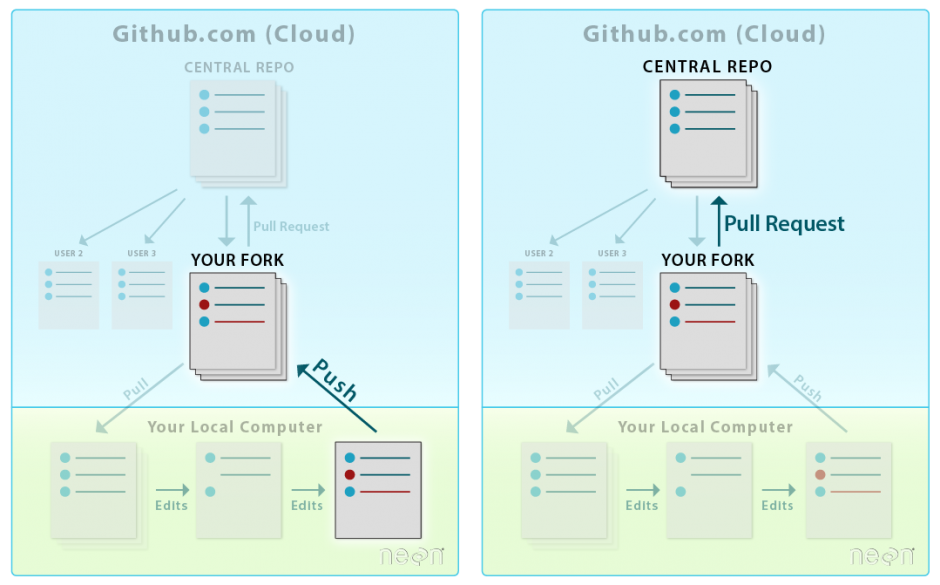

It's a great tool, but don't rebase commits other developers have based work on. Unlike the Git merge command, rebase involves rewriting your project history. Wouldn't it be nice if you could see this information at your faithful command prompt? I thought so too so I started tapping with my bash chopsticks and cooked it up. Dave McKay Dec 12, 2022, 12:00 pm EDT 7 min read fatmawati achmad zaenuri/ The Git rebase command moves a branch to a new location at the head of another branch. Dave McKay Dec 12, 2022, 12:00 pm EDT 7 min read fatmawati achmad zaenuri/ The Git rebase command moves a branch to a new location at the head of another branch. Tip of the day: Ahead/Behind numbers in the promptĪfter a fetch, git status shows you how many commits you are ahead or behind of the synced remote branch. Rewriting history of shared repositories and branches is something you should NEVER do. Assume you are currently working on master branch, and wish to rebase feature branch onto master. Note: You should do this only when working with your own fork. There is a button that swaps branch and upstream.
Personally I prefer to keep the history as clean as possible and go for option three, but different teams have different workflows. You have a few options: git push -f origin feature-x
#GIT REBASE UPSTREAM UPDATE#
Git checkout -b feature-x #some work and some commits happen #some time passes git fetch upstream git rebase upstream/main Publish with git forkĪfter the above steps, publish your work in your remote fork with a simple push: git push origin feature-xĪ slight problem arises if you have to update your remote branch feature-x after you've published it, because of some feedback from the upstream maintainers. In a standard setup, you generally have an origin and an upstream remote - the latter being the gatekeeper of the project or the source of truth to which you wish to contribute.įirst, verify that you have already setup a remote for the upstream repository, and hopefully an origin too:

Let me start by detailing a common setup and the most basic workflow to interact with upstream repositories. Git upstream: Keep up-to-date and contribute If you just rebase without first updating upstream/master, you won't get the same result. If you’ve deleted the branch locally, you can use: git checkout -track origin/main That will track locally the remote origin/main branch. In this blog, I’ll introduce you to the basics, the gotchas, and even leave you with a cool tip to get you ahead of the curve. 1 Answer Sorted by: 66 The git pull -rebase will fetch ( git fetch) first, updating upstream/master commits. git checkout main git fetch upstream git merge upstream/main Or git rebase upstream/main git push origin upstream/main origin/main This way you can keep your main branch as a mirror of upstream’s main. To make sure all contributors are drawing from the same place, you’ll need to know some principles of how git forking interacts with git upstream. But if you’re not sending those changes back upstream-which means sending it back to the parent repository-you’re at risk for losing track of them, which can cause divergent lines in your repository. git fetch upstream master git checkout -b newfeature upstream/master.

It seems to me that this notion of 'upstream branch' needs some disambiguation in the documentation.Forking projects to make your own changes lets you easily integrate your own contributions. Shared feature branch on upstream repo is not required for that feature. After trying the above, I again tried git push origin mybranch but the same error persisted. Furthermore, I've come across having 'multiple upstream branches', ( git branch with multiple upstreams) which further confounds this conundrum. git fetch upstream git rebase upstream/master This did not give any errors, but it has also not pushed anything to my remote fork. The first one is clear to me but, for the life of me, I can't seem to wrap my head around what 'upstream' refers to in rebase. Or: git-rebase -continue | -abort | -skip | -edit-todo 'upstream' in (2) is displayed in the CLI help: $ git rebase -h After that, on the same branch, I can use git pull upstream branchname to fetch the changes from the specified remote repository upstream. It seems to me that the phrase 'upstream branch' is ambiguous and appears to have two contexts.Īn upstream branch is one that is tracked by a local branch (see Git Branching - Remote Branches), andĪn upstream branch is something in the context of rebasing (see Git Branching - Rebasing).


 0 kommentar(er)
0 kommentar(er)
